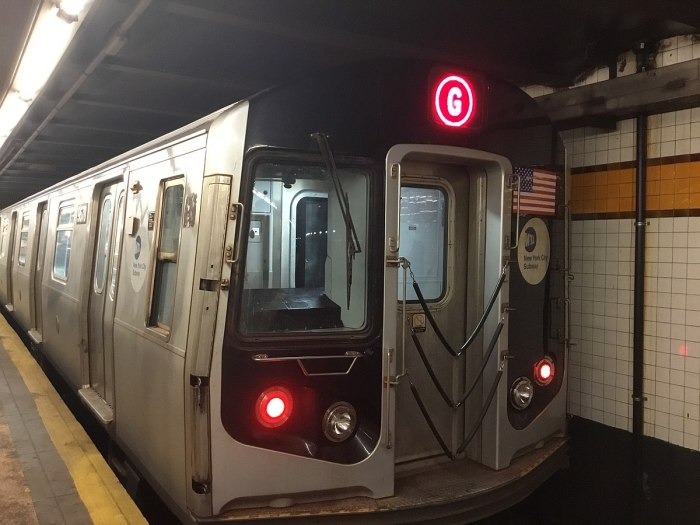
Being interested in the future and all its technological promise and terror, I wanted to see the new self driving cars in Brooklyn.
That’s the handful of autonomous vehicles operated by tech company Optimus Ride, which launched an open-to-the-public self-driving vehicle program within the Brooklyn Navy Yard on Wednesday.
I’m an MTA stalwart, but new transportation options can be fun. I decided to travel my path to the future chronologically, using the other new modes of getting around NYC.
That meant that near amNY’s Midtown office I picked up a Citi Bike (launched 2013). It was a straight shot east on busy 34th Street, a decent connection compared to the other option, a bus, none of which I saw on my 7 minute, 0.9 mile, 40 calorie trip. The bus lane, predictably, was sometimes clogged with trucks, and also, from time to time, me on the bike. I later learned in an email from the city Department of Transportation that traffic rules forbid bikers from the bus lane, too, even if a bus isn’t behind you. Who said disruption wasn’t messy!
At the waterfront I dismounted and bought a ticket for the NYC Ferry (est. 2017). There I ran into the typical ferry downside, a 25 minute wait for the next boat. But there were positives: the air-conditioned vessel interior, the view-full top deck, the concession stand selling Montauk beers and Clif bars, one of which I ate, experiencing the future being famishing.
We coasted across the river and prepared to meet the new modernity.
So simple: a little white golf-cart-looking contraption waited for ferry passengers, “SELF-DRIVING” in block text on the back, unobtrusive cameras and sensors poking out the sides. The Optimus Ride car (first NY public trips: 2019) had a “safety driver” and a software operator up front. “Buckle up,” said the software operator, Drew Anderson. The driver, hands cupped a few inches below the self-twirling wheel, didn’t say anything.
That first ride passed so quickly and seemingly smoothly that I almost forgot that a computer had taken my life into its digits.
“Safety’s our number one priority,” said Anderson soothingly, looking out at the road through company-branded sunglasses.
The ride had taken just a few minutes and covered around half a mile to get between the ferry landing and one of the Navy Yard’s main entrance gates, but I was too consumed to have a sense of the clock, watching the machine stop carefully at stop signs and make right turns after waiting for delivery trucks to go by, the wheel spinning on its own above the safety driver’s hands.
On subsequent rides, I sat as the car slowed for a turning Navy Yard bus, watched it veer a little to the left to avoid a pack of kids in matching orange camp shirts chaotically crowding the road. When a motorcycle at one point darted out in front, the silent driver did in fact grab the wheel and make sure we didn’t hit it. “We don’t wanna take any chances,” said Anderson.
A snafu occurred Tuesday where a car that a spokeswoman said was in manual, non-autonomous mode rolled back slightly and had a "really minor tap" with another car. But onward.
The cars are operating only on Navy Yard grounds for now, but there are plenty of people eager to try out the new mode, like Sam Matamoros, an artist assistant.
“I been waiting for months,” he enthused after we shared a (safe) ride.
The 51-year-old has already cottoned on to the new ferries, which he says cut down his commute from Astoria significantly. And regarding the cars, he’s glad to be “witnessing” a moment of great technological change.
This idea of witnessing had me thinking — what comes in the chronology after autonomous vehicles? Do they change New York for the better, providing comfortable connections like the new bikes and ferries sometimes do? Do they bolster public transit and connect the world? Or if successful and embraced do they lead to more traffic, more car ownership and usage, less love for the subways, and any number of other unforeseen results?
Matamoros had an idea about that already.
“Once the cars get in the air it’ll be a different story,” he said, noting the persistent utopian dream. “It’s just a matter of time.”
































